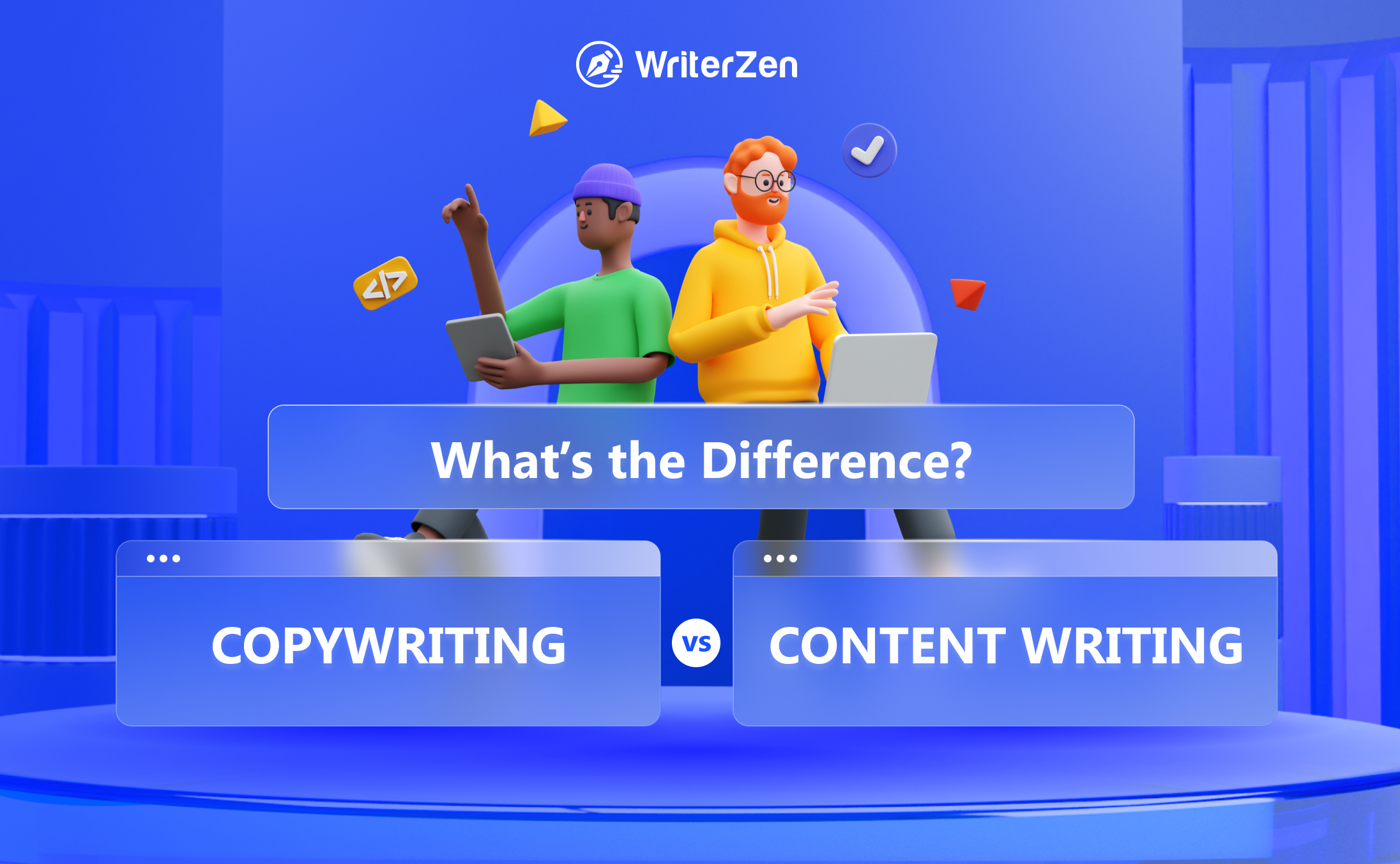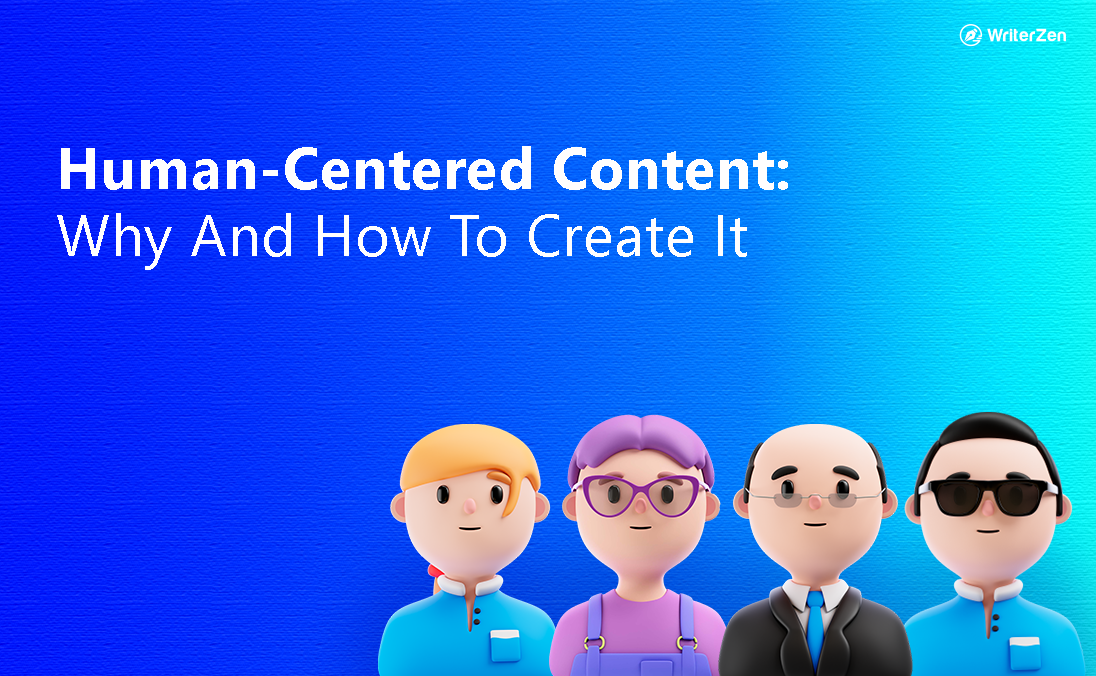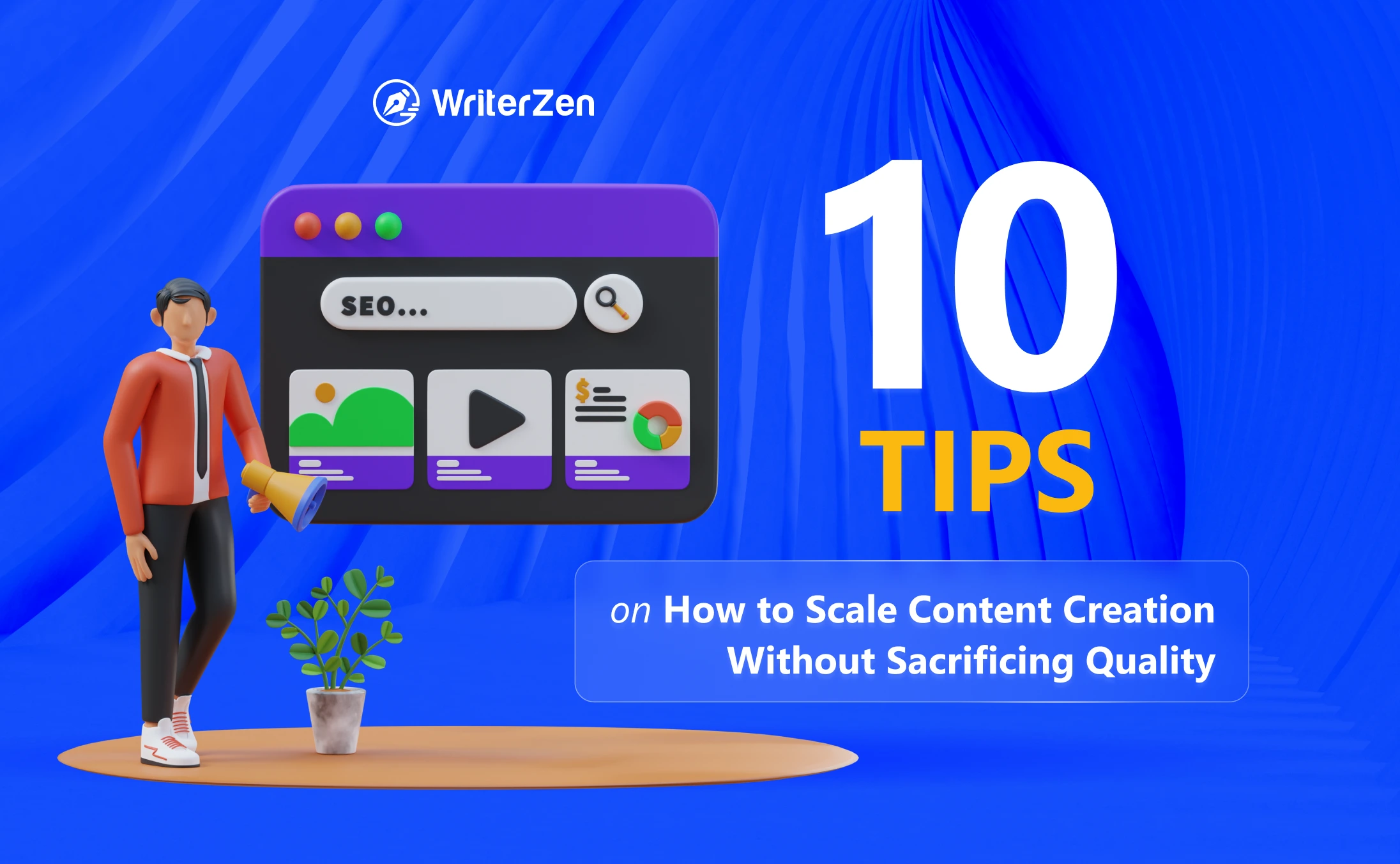How many times have you seen people using copywriting and content writing interchangeably? You’ve lost count, right?
Some assume copywriting is similar to protecting the rights of any creator. While they may sound similar, they are distinct disciplines that serve different purposes. By the same token, copy and content writing have a lot of differences.
That’s why understanding the distinction between copywriting and content writing is crucial for businesses and professionals looking to craft effective messages that engage and persuade their target audience.
In this article, we will touch upon the similarities and differences between copywriting and content writing with examples, delve into their respective roles, and highlight the skills required for each.
Difference between Content and Copywriting
To understand the differences between content writing and copywriting, it is essential for you to grasp their underlying:
-
Purpose
-
Direction
-
Goal
While both disciplines involve writing for promotional or marketing purposes, they serve distinct functions.
Content writing focuses on creating informative and valuable content that educates, entertains, and engages the audience.
Its primary goal is to provide relevant information, answer questions, and establish the brand's authority and expertise. Content writing aims to build a long-term relationship with the audience by offering valuable insights and fostering trust.
On the other hand, copywriting is centered around persuasive writing that drives immediate action from the audience.
The main purpose of copywriting is to influence the reader's behavior, evoke emotions, and ultimately lead them to take a specific action, such as making a purchase, signing up for a newsletter, or filling out a form.
Copywriting is often employed in sales pages, advertisements, landing pages, and email marketing campaigns.
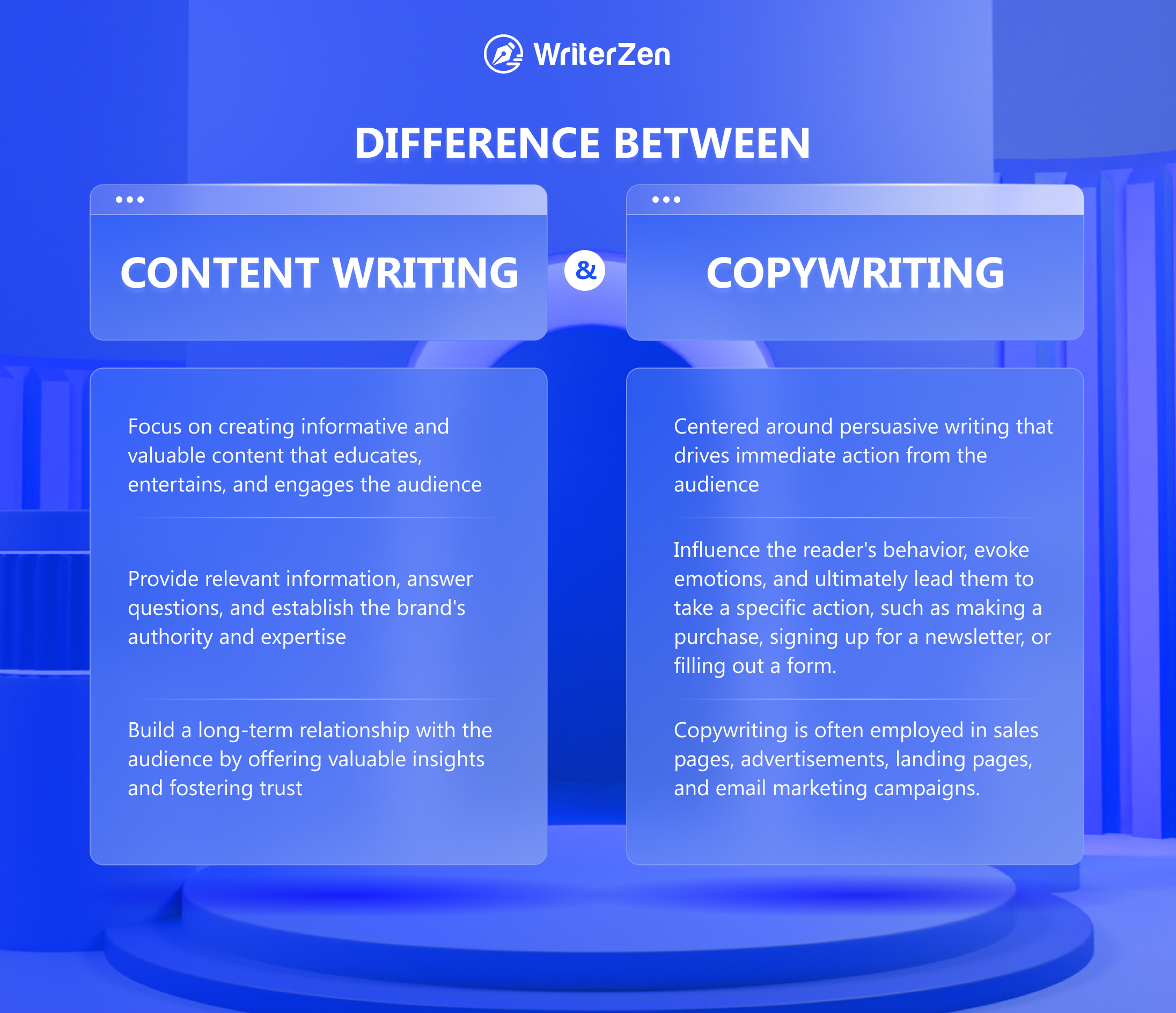
What Does a Copy and Content Writing Role Entail?
Copywriting and content writing require distinct approaches and skill sets due to their contrasting objectives. Let's take a closer look at what each role entails and how they differ.
Copywriting
Copywriters are responsible for creating persuasive and compelling content that motivates readers to take action.
They must understand the target audience's desires, pain points, and motivations to craft messages that resonate with them.
Copywriters often work closely with marketers and sales teams to align their writing with the brand's overall strategy.
Examples of copywriting include sales letters, product descriptions, social media ads, email newsletters, and landing page content.
A great copywriter knows how to use persuasive language, compelling storytelling, and strong calls-to-action to elicit the desired response from the audience.

Source: Reddit
Content Writing
Content writers, on the other hand, focus on creating informative and valuable content that addresses the audience's needs and interests.
They research and develop topics that are relevant to the target readers and provide valuable insights or solutions. Content writers aim to establish the brand as an authority in their industry and engage the audience over the long term.
Examples of content writing include blog posts, articles, white papers, e-books, and social media content.
Content writers must possess excellent research skills, the ability to simplify complex information, and a talent for storytelling to engage and captivate the audience.
Examples of Copywriting and Content Writing
Copywriting
One compelling example of copywriting is a captivating headline that grabs the reader's attention and entices them to click and explore further.
A well-crafted headline can make a significant difference in the success of an article, blog post, or advertisement.
For instance, a headline like "Unlock the Secrets to Financial Independence: 5 Proven Strategies" immediately piques curiosity and promises valuable insights, encouraging readers to delve into the content.
Another example of effective copywriting is seen in advertising slogans and taglines. Memorable and impactful slogans have the power to evoke emotions, create brand recognition, and influence purchasing decisions.
Nike's iconic slogan, "Just Do It," encapsulates the brand's empowering and motivational ethos, resonating with consumers and inspiring them to take action.
Content Writing
Content writing, on the other hand, focuses on creating informative and engaging material that provides value to the audience. A well-researched and well-written blog post or article can position a brand as an authority in its industry.
For instance, a blog post titled "The Ultimate Guide to Organic Gardening: Tips, Techniques, and Tools" not only educates readers but also establishes a connection with environmentally-conscious individuals who are interested in sustainable practices.
Content writing is also prominent in social media captions and posts. Platforms like Instagram and Twitter demand concise yet engaging content that captures the audience's attention amidst the constant stream of information.
For example, a creative and relatable Instagram caption accompanying a product photo can generate interest, encourage interaction, and ultimately drive sales.
Skills Both Content and Copywriters Need
While the roles of content writing and copywriting differ, there are several key skills that both content and copywriters should possess to excel in their respective fields.
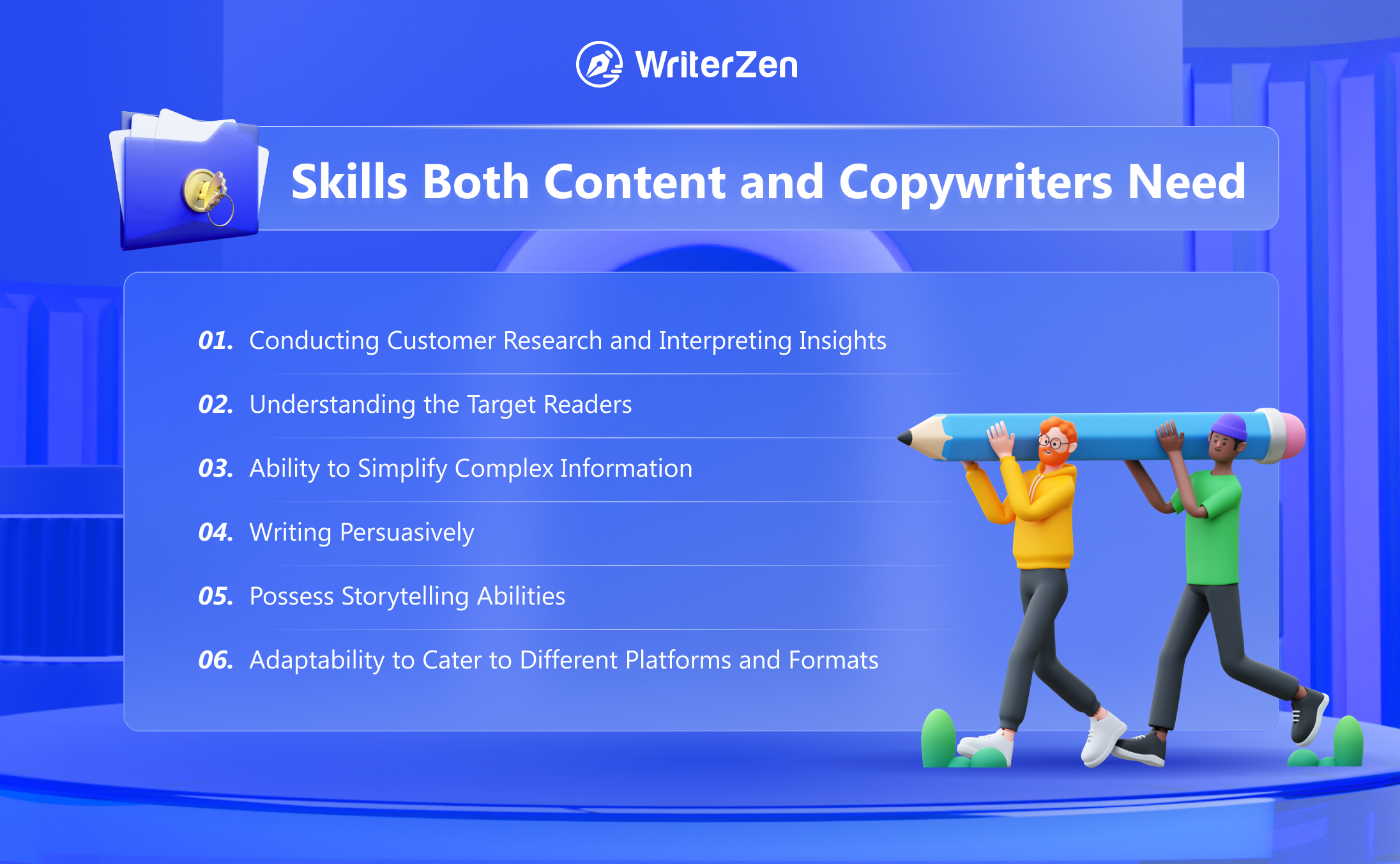
Conducting Customer Research and Interpreting Insights
Both content and copywriters need to understand their target audience's preferences, interests, and pain points.
This requires conducting thorough customer research, analyzing data, and interpreting insights to tailor the writing to the audience's needs.
To begin the process, writers embark on comprehensive customer research. This involves gathering data through various channels, such as surveys, interviews, social media analytics, website analytics, and market research reports. These sources provide valuable information about the target audience's demographics, psychographics, online behavior, and purchasing habits.
With this wealth of data in hand, the next step is to analyze and interpret the insights gained. This requires a meticulous approach to uncover meaningful patterns and trends that can inform the writing process.
Writers must pay attention to key indicators, such as the audience's preferences for certain topics, the language and tone that resonate with them, and the platforms they prefer to engage with.
By analyzing the data, writers can identify the pain points and challenges faced by their target audience. This understanding enables them to address these pain points directly in their writing, offering solutions and providing valuable insights.
Understanding the Target Readers
Content and copywriters must have a deep understanding of the target readers' demographics, motivations, and behaviors.
This knowledge helps them create content that resonates with the audience and compels them to take action.
Ability to Simplify Complex Information
Both content and copywriters require the skill to simplify complex concepts and present information in a clear and concise manner. For example,
-
When explaining a technical topic, they should carefully provide enough information without overwhelming their audience with unnecessary details. This may involve using analogies, metaphors, or real-life examples to simplify complex concepts and make them relatable.; or,
-
When breaking down intricate processes, writers must outline the steps in a logical sequence, ensuring clarity and coherence. By organizing the information into a structured format, such as bullet points, numbered lists, or visual diagrams, writers can enhance comprehension and make the content more visually appealing.
Another aspect of simplifying complex information is the art of summarization. Writers must be able to extract the essence of a lengthy or intricate piece of information and present it directly. This skill is particularly important in copywriting, where simplicity is essential for capturing attention and driving action.
Simplifying complex information also involves formatting the content or copy in a logical and easy-to-follow format. This may include using headings, subheadings, and bullet points to break up the text, highlight key points, and improve readability.
Writing Persuasively
While copywriters primarily focus on persuasive writing, content writers can also benefit from honing their persuasive skills.
Crafting compelling narratives, using persuasive language, and incorporating persuasive elements in content can help engage the audience and encourage them to take desired actions.
Whether it's through storytelling techniques like anecdotes, case studies, or personal experiences, writers can bring their content to life and make it more relatable and memorable.
Persuasive language includes techniques such as using strong and active verbs, employing sensory details, appealing to emotions, and utilizing rhetorical devices like metaphors and similes.
Incorporating persuasive elements throughout the content can help guide the reader toward the desired action. This can include using compelling headlines or titles to grab attention, structuring the content in a logical and persuasive sequence, and employing persuasive calls-to-action that clearly communicate the desired outcome.
Content writers can also benefit from integrating persuasive elements within blog posts, articles, or other forms of content to encourage readers to take the next step, such as subscribing to a newsletter, sharing the content, or exploring related products or services.
Whether your goal is to drive immediate conversions or establish thought leadership, persuasive writing is a powerful tool that can make your content or copy more impactful and influential.
Storytelling
Both content and copywriters should possess storytelling abilities. Storytelling adds depth and relatability to the writing, making it more engaging and memorable for the audience.
In content writing, storytelling allows writers to take readers on a journey. By crafting narratives that illustrate real-life experiences, challenges, or successes, writers can convey their message in a compelling and relatable way.
Stories can help readers understand complex concepts, inspire them, or provide practical insights. By presenting information within a narrative framework, content writers can transform dry facts into engaging stories that the audience can connect with.
Copywriters, too, can leverage storytelling techniques to create persuasive messages. By incorporating narratives into their copy, they can tap into the audience's emotions, desires, and aspirations.
Storytelling allows copywriters to paint a vivid picture of the benefits or transformation that their product or service offers in a particular niche.
By presenting the reader as the protagonist in the story, copywriters can make the message more personal and compelling, ultimately motivating the audience to take action.
Adaptability
Both disciplines require adaptability to cater to different platforms and formats. Content and copywriters should be able to adjust their writing style, tone, and format to suit various mediums, such as blog posts, social media, email newsletters, or landing pages.
Each platform has its own unique requirements and expectations, and writers must be flexible enough to meet them.
For example, writing a blog post requires a more conversational and informative tone, while social media content often necessitates brevity and an attention-grabbing approach.
Email newsletters may require a more personalized tone to establish a direct connection with the reader while landing pages demand concise and persuasive copy to drive conversions.
Adaptability extends beyond writing style and tone. It also encompasses staying up-to-date with emerging trends, technologies, and changes in consumer behavior.
The digital landscape is constantly evolving, and writers must be agile in their approach to meet the ever-changing needs and expectations of the audience.
So, When Do You Need a Content or Copywriter?
Knowing when to engage a copywriter or content writer can make a significant impact on the success of marketing and promotional campaigns.
If your goal is to drive immediate action, such as generating sales, sign-ups, or conversions, a copywriter is the right choice. They specialize in creating persuasive and compelling content that motivates the audience to take specific actions.
On the other hand, if your objective is to establish thought leadership, provide valuable information, and build long-term relationships with your audience, a content writer is the ideal option. They excel in creating informative and engaging content that educates, entertains, and establishes the brand's authority.
Ultimately, the decision to hire a copywriter or content writer depends on your specific goals and the stage of your marketing strategy. In some cases, a combination of both may be necessary to achieve a comprehensive and impactful content marketing approach.
Final Thoughts
While copywriting and content writing are both essential components of effective marketing communication, they serve distinct purposes and require different skill sets.
By understanding the differences and leveraging the skills required for each discipline, businesses and professionals can create impactful messages that engage and resonate with their target audience.


